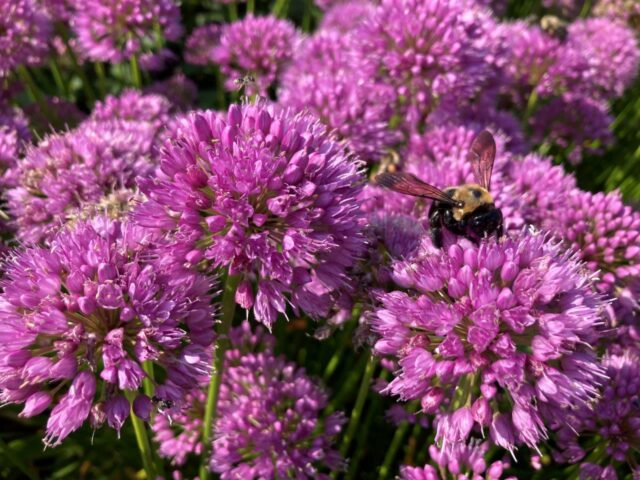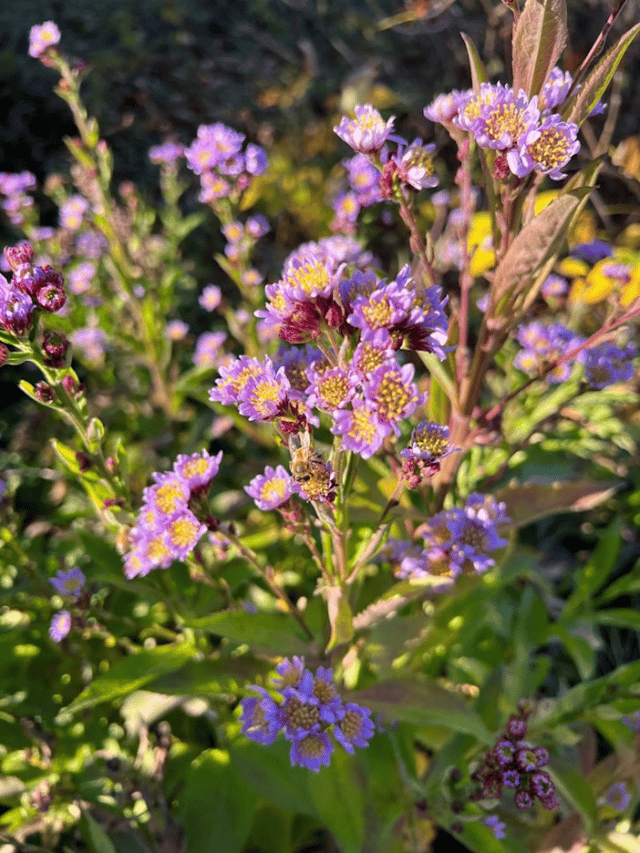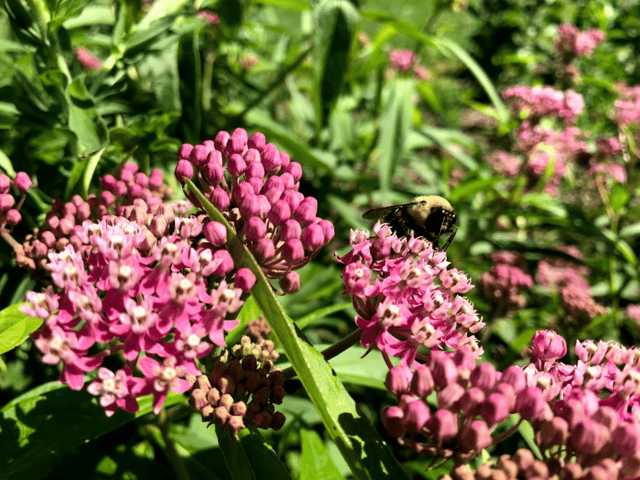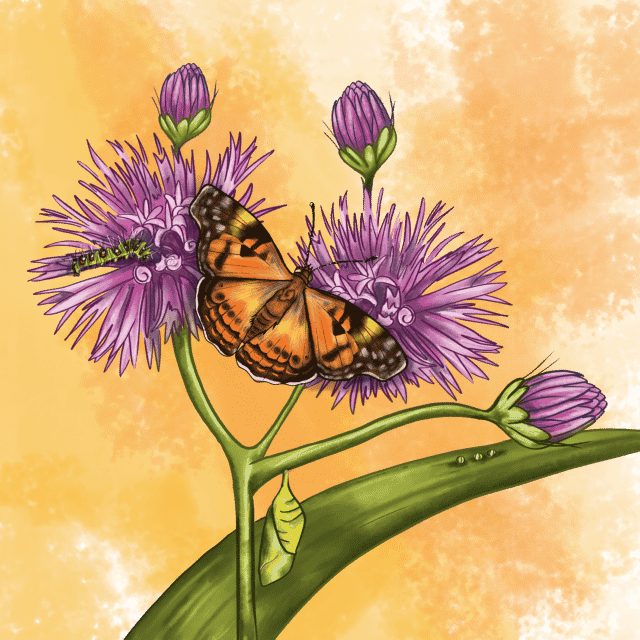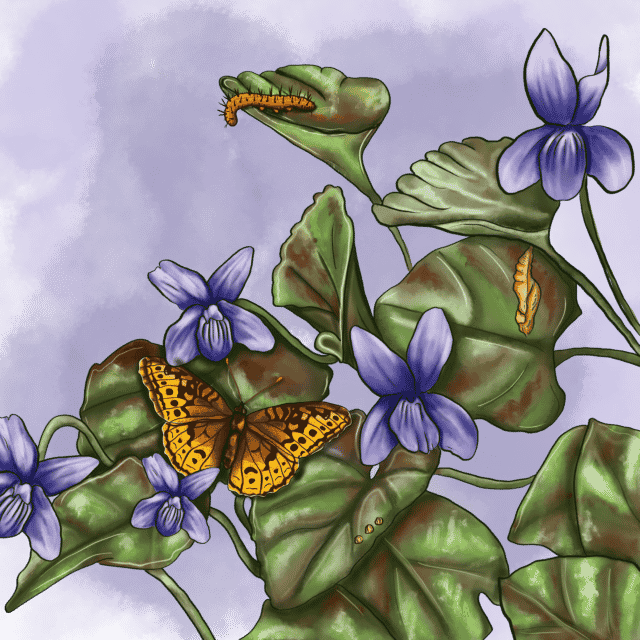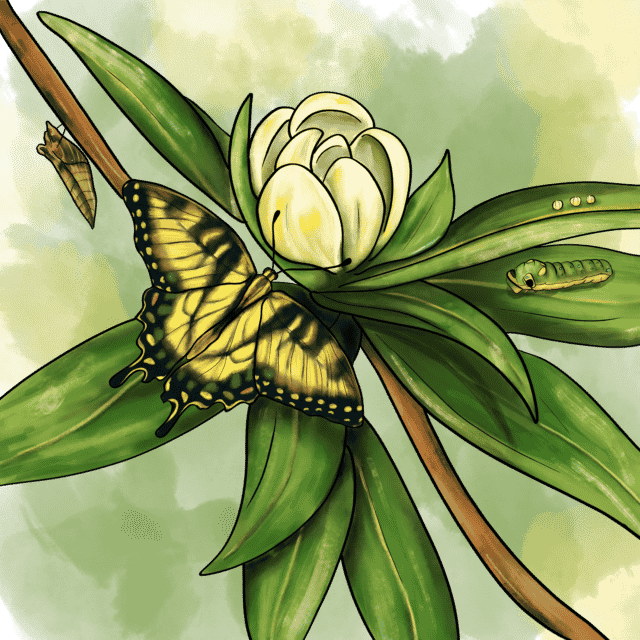
With this unseasonably beautiful weather we have been experiencing here in Northeast Ohio it is hard to ignore the loud knocks of spring. Daffodils seem to have popped out of nowhere, swaths of forsythia cover roadsides, and cherry trees are popping left and right. I blink and a new plant is in bloom. What is there not to love about the bulbs and flowering shrubs luring you outside after our winter hibernation? But with all the (understandable) excitement around the bright flowers of spring, many miss the tiny flowers on our big trees.
Any plant that generates a seed first must don a flower. Yes, yes we know this. But do you ever think about what that means? That means an oak tree blooms, a maple tree, that beech in your backyard, or the basswood down by the creek–they all bloom! It can be easy to miss these little flowers (some dare to call them inconspicuous) when there is so much happening out in the gardens, but these are a major food source for our pollinators.
In fact the tiny flowers on trees are vital for our pollinators, specifically our bees. Trees like red maples (Acer rubrum) and many species in the willow (Salix) family are some of the earliest plants to bloom in spring, which means they are also the first available meal for the pollinators. Pollinators wake up when temperatures rise in early spring, and they are hungry. For little pollinators, being hungry with no food reserves also means they are vulnerable. They cannot last long without their first meal. Sure they love the daffodils and forsythia as much as we do but, when it comes to getting a full meal of pollen and nectar, pollinators rely on trees to deliver the quantity.
However spring isn’t the only time when large flowering trees are useful. From the second the bees get to buzzin’ in springtime until freezing temperatures return in fall, pollinators actively work to collect and store enough food for their colonies or their eggs to overwinter. Trust me, I love all the perennials as much (if not more) than anyone but when it comes to food quantity to space ratio, trees got them beat.
Caring about the pollinators and saving the bees is all the rave these days. As it should be! So in addition to minimizing your pesticide use, extending the flowering time in your garden, and using native plants, consider planting a flowering tree.
But what to plant? Again willows and maples, specifically Red Maples are extremely useful for the pollinators to get a good start on the season. But trees flowering anytime throughout the year will be greatly appreciated by our pollinators. Basswoods (Tilia americana) are to be noted as one of the best producers of nectar. More showy flowering trees like Serviceberries (Amelanchier arborea), Catalpas (Catalpa speciosa), Tulip Trees (Liriodendron tulipifera), and Black Locusts (Robinia pseudoacacia) are also great food sources with a little more flare for your garden. The Arbor Day Foundation has a wonderful page listing many more trees that are useful food sources for our pollinators. Click here to view.
We have most of these trees on (blooming) display for you at our campuses. When you visit please ask one of us about them. And don’t forget to pledge to plant a tree and join our People for Trees movement, which aims to plant and care for 15,000 new trees in Northeast Ohio by 2025. Click here to make your pledge and you will receive resources to plant and care for your tree from our tree experts at HF&G! Happy planting!

Caroline Paul
Horticulturist
Caroline has been practicing her craft at the botanical garden for three years. She comes to us with a biology degree from Ohio Wesleyan University and experience designing with flowers. And these skills are on beautiful display throughout the Terrace and Restorative Gardens. Caroline also has a special interest in the intricate traditional pruning methods she applies to the Japanese Garden. That’s enough to keep her busy—but she’s never too busy talk gardening with you!
